Secret headquarters orchestrate Vietnam's 1975 victory
The exhibition offers a chance to revisit the golden pages of the nation’s history and pays tribute to generations of heroic martyrs who sacrificed their lives for peace and freedom.
THE HANOI TIMES — Hanoi’s Thang Long Imperial Citadel, a UNESCO World Heritage Site known for its rich archaeological heritage, is currently hosting an exhibition titled “The Path to Victory,” showcasing significant historical artifacts from the American War in Vietnam (1954–1975).
Open until May 31 at 19C Hoang Dieu Street in Ba Dinh District, the exhibition offers visitors a compelling journey through Vietnam’s wartime past.
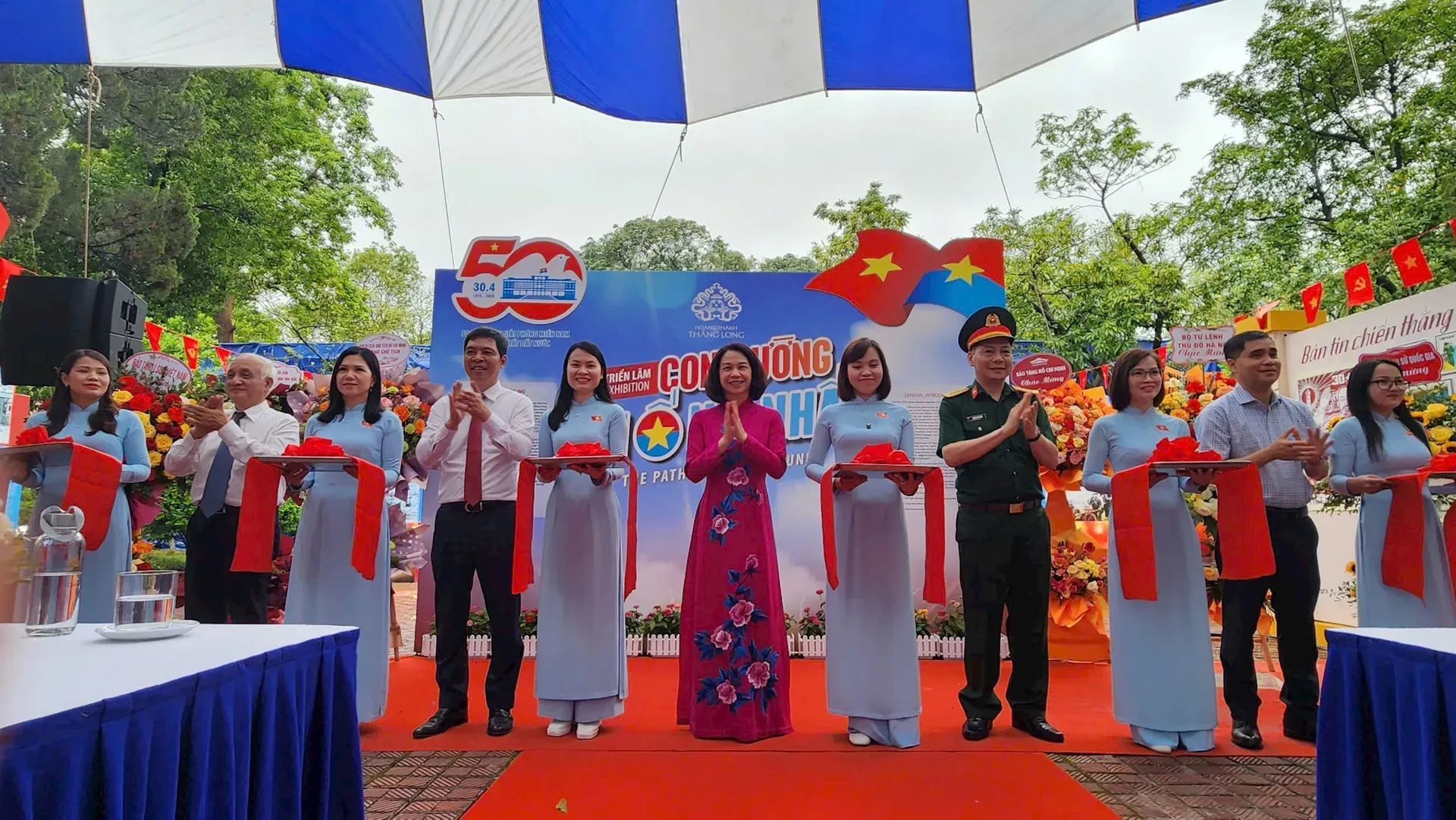
The opening ceremony of "The Path to Victory" exhibition on April 28 at the Thang Long Imperial Citadel in Hanoi. Photo: Ngoc Chau/ The Hanoi Times
An important wartime work
The relic houses historical remnants, notably the D67 House and Bunker.
These sites were the secret command center and shelter of the Politburo, the Central Military Commission, the Ministry of National Defense, and the General Staff of the Vietnamese People's Army.
From September 1968 until the historic victory on April 30, 1975, it was here that the Politburo of the Vietnamese Workers' Party (renamed the Communist Party of Vietnam in 1976), the Central Military Commission, and the General Command gathered intelligence, formulated bold strategies, and led the Vietnamese people in the war against the United States.
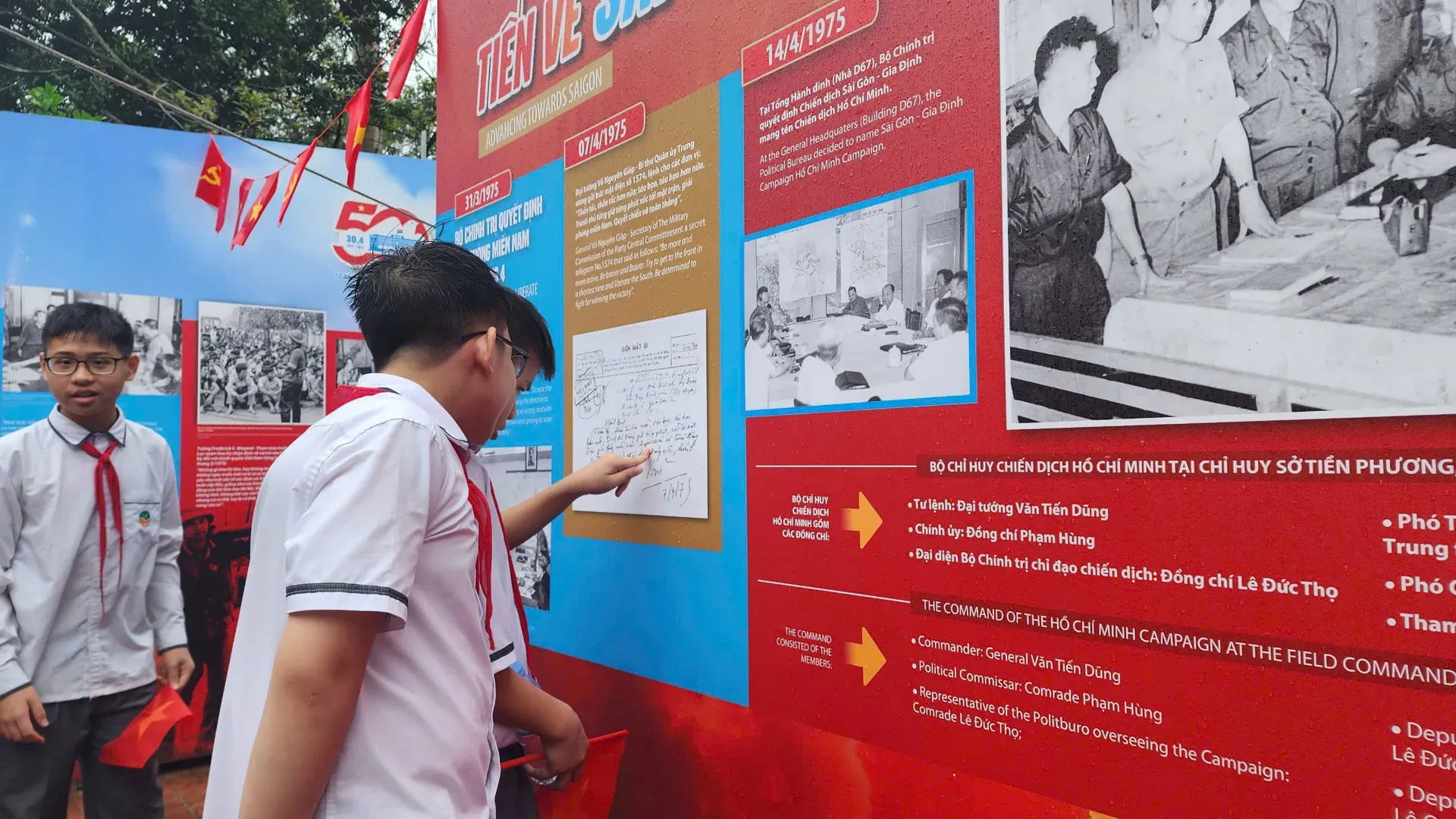
Young visitors explore the map of the D67 house and bunker at the Thang Long Imperial Citadel.
According to Nguyen Thanh Quang, Director of Thang Long - Hanoi Heritage Conservation Center, at the underground headquarters D67 House and Bunker, leaders made critical decisions that led to the April 30, 1975 victory.
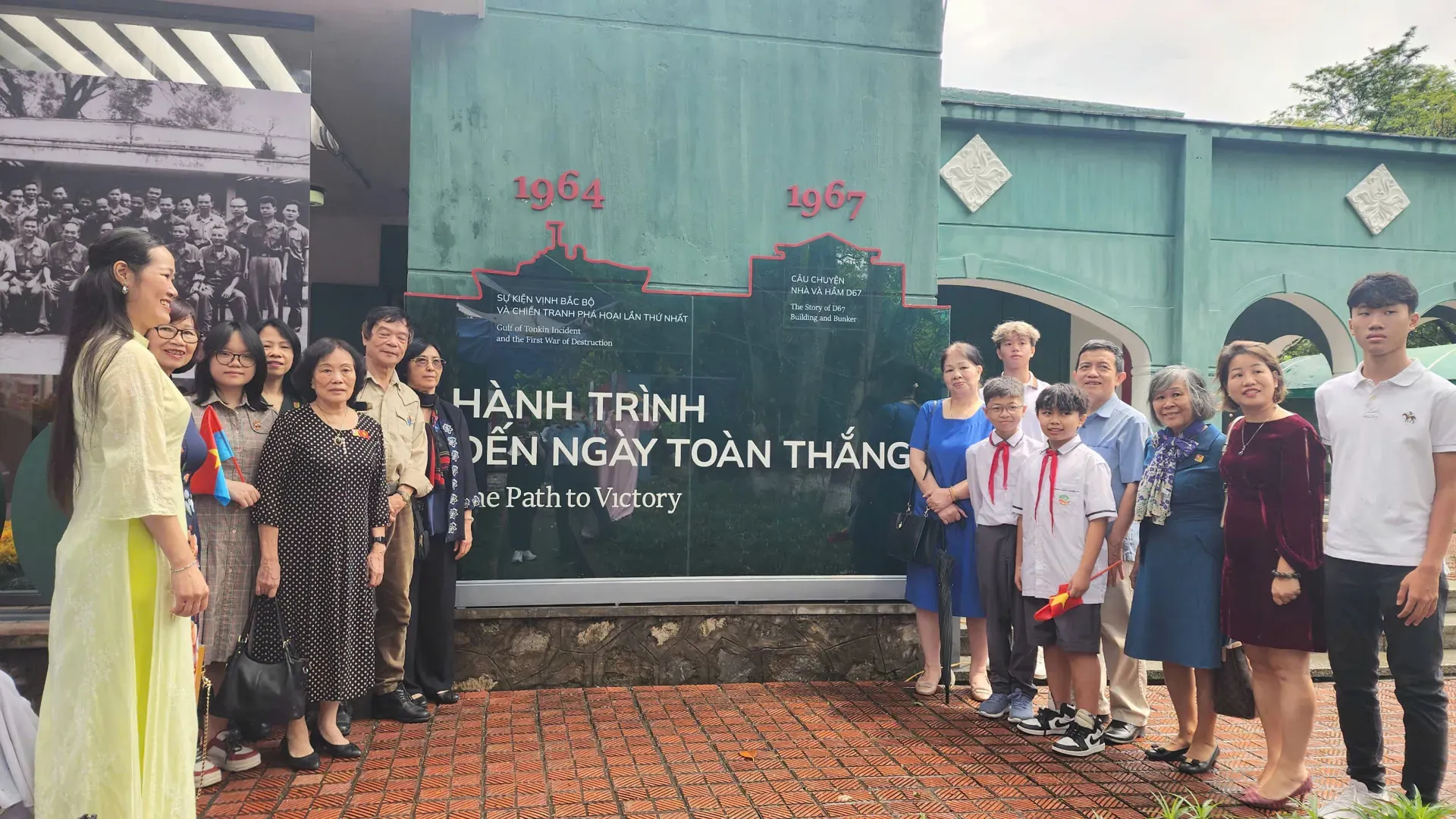
Visitors to the "Path to Victory" exhibition at the Thang Long Imperial Citadel in Hanoi. Photo: Ngoc Chau/ The Hanoi Times
"The historic decisions of the Politburo of the Vietnam Workers' Party, issued from the D67 House and Bunker, led the resistance to a miraculous victory, the triumphant historic Ho Chi Minh Campaign, with the spirit of 'speed, more speed; daring, more daring. Seize every hour, every minute. Rush to the front and liberate the south. Resolve to fight to secure total victory,'" he said, quoting General Vo Nguyen Giap (1911-2013).
Quang said the exhibition is an opportunity to review the golden pages of the nation's history. It is also a tribute to the generations of heroic martyrs who fell for peace and freedom. At the same time, it gives strength to the present generation in national building and development.
The path to national unity
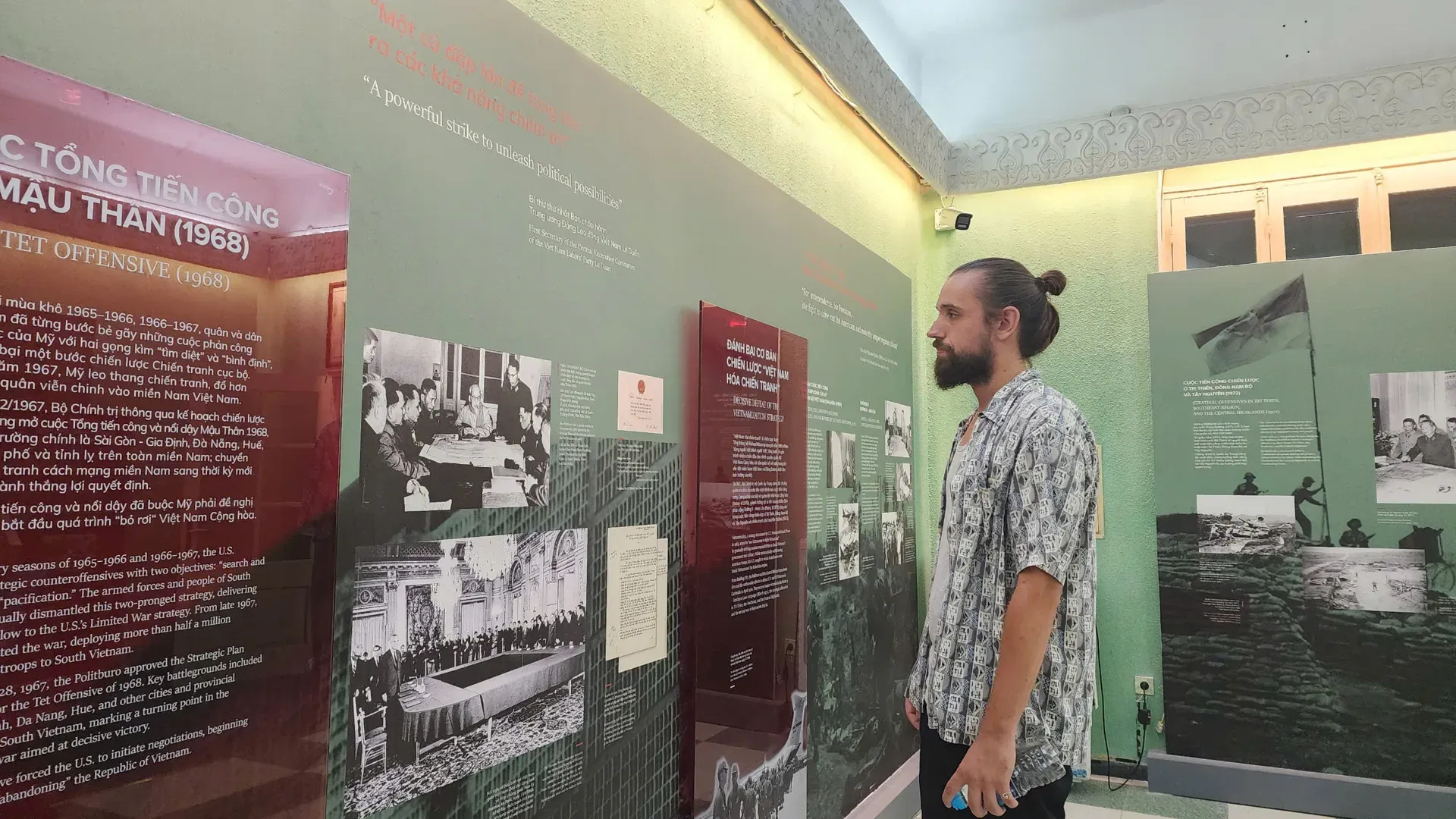
The 1975 Victory make a strong impression on international visitors to Hanoi these days.
"The Path to Victory" exhibition features more than 200 never-before-seen documents and photographs that vividly re-create the period between the signing of the Paris Agreement in 1973 and the historic victory on April 30, 1975. The event offers a powerful narrative of Vietnam's final sprint toward national reunification.
Divided into three sections, including "Strategic Decisions of General Headquarters," "One Day Equals 20 Years," and "Advance to Saigon," the exhibition explores the leadership, momentum, and determination that led to the liberation of South Vietnam.
The "Strategic Decisions of the General Headquarters" section introduces the revolutionary situation following the 1973 Paris Agreement. The exhibit shows how the Politburo and the Central Military Commission, after analyzing the changing dynamics of the war, formulated a decisive strategy to bring the revolution to a successful conclusion.

D67 House, also known as Dragon House, is the seat of the Politburo, the Ministry of Defense, and the Central Military Commission in 1967. Photo: Thang Long Imperial Citadel.
The exhibition "One Day Equals 20 Years" presents photographs and records that capture the rapid development of the uprising in the Spring of 1975. It illustrates the pace of the campaign, described as "lightning speed", with a series of military victories in the Central Highlands and the south central region.
The final section, "Advance to Saigon," chronicles the culmination of the Ho Chi Minh Campaign. With momentum building on all fronts, the Politburo issued its final directive to launch a full-scale offensive to liberate Saigon, emphasizing the strategy of "speed, more speed; daring, more daring... Rush to the front and liberate the South."
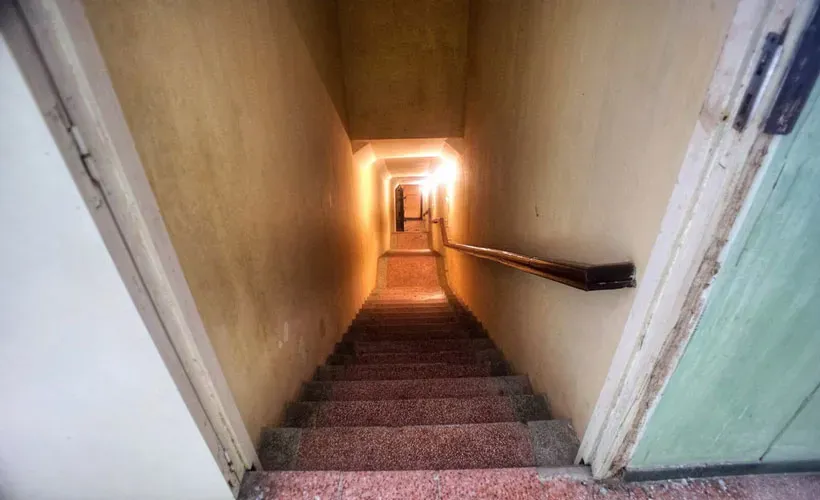
The stairs down to House D67. Photo: Thang Long Imperial Citadel.
The exhibition serves as a meaningful contribution to educating younger generations about Vietnam’s revolutionary history and the immense sacrifices made for peace, independence, and national unity.











